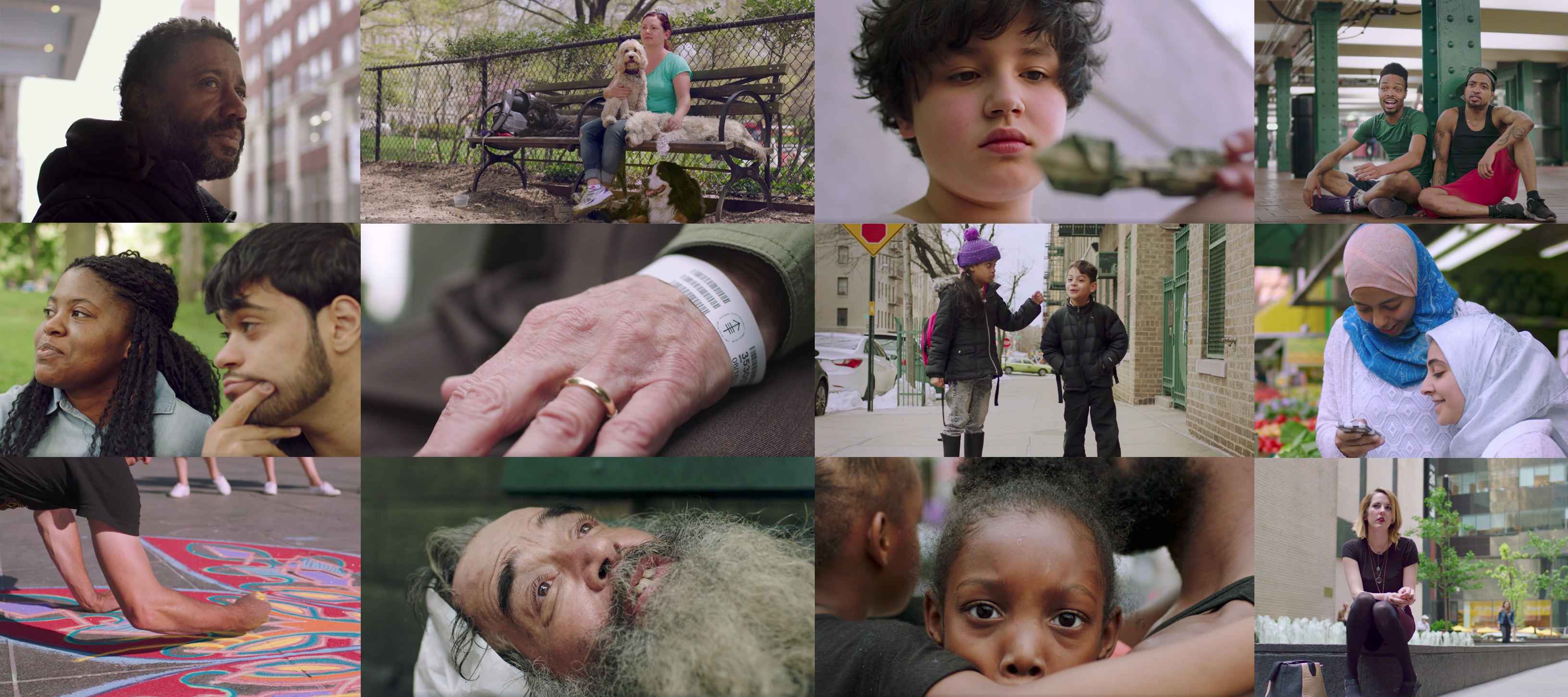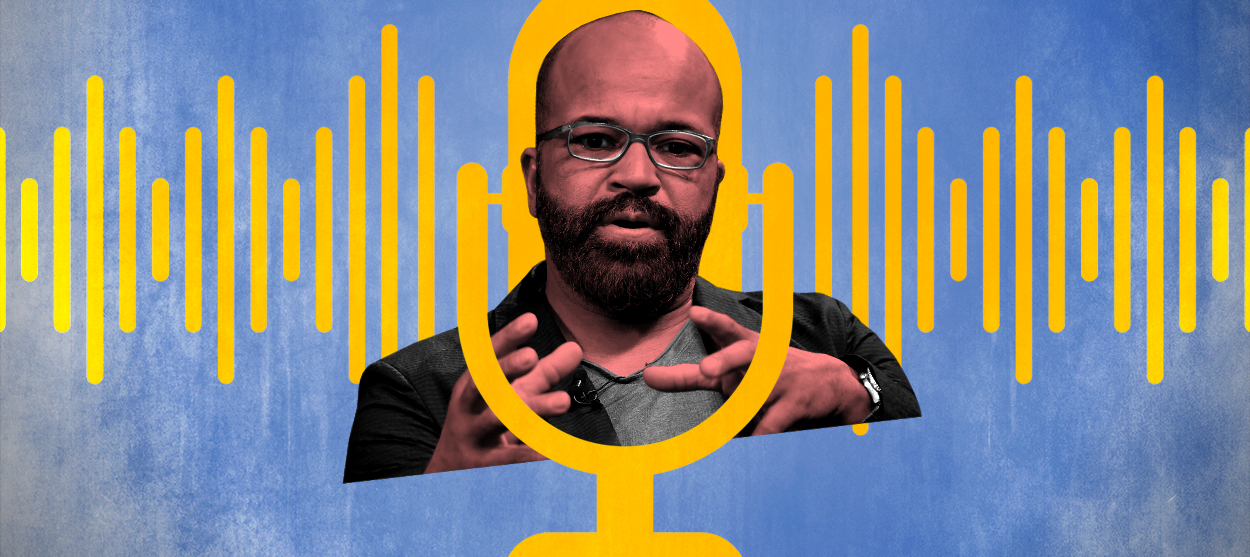The Humans of New York Facebook show is social media at its best
In video form, Brandon Stanton's series remains as beautifully ephemeral as the original

"Let's be happy for a couple of minutes," a subway performer says in Humans of New York, a 13-part series being released weekly on Facebook. The show was created by Brandon Stanton, the man behind the hugely popular photography series — which gained much of its millions-strong following on Facebook — of the same title. As a photography series, Humans of New York was captivating for its sheer simplicity: a single photograph of a New Yorker, generally on the street, in the park, on a train, or in any of the public spaces that allows for the unmediated encounters the series collected, and which are so intrinsic to the identity of the city itself. The only accompaniment was a caption in which the subject shared anything from their life story to a stray remark.
As a video series, Humans of New York doesn't expand on this premise so much as render it more dynamic. Beautifully filmed by cinematographer Michael Crommett, the show knows how to draw the eye to the details in subjects' faces, from make-up to silver hair to faint wrinkles, in a way that makes it feel as if the viewer is invited to accompany the series' crew in their own discovery of the subject. These are brief segments, culled from a vast archive of 1,200 interviews captured over 400 days, but they are intentionally fragmentary: Often, an interviewee appears answering a question we didn't hear and can only guess at, or realizes what they really think only in mid-response.
"I'm not gonna tell my life to nobody," a woman sitting on a stoop with a hot-pink purse beside her says in one episode, and then, in elaborating on this policy, divulges something perhaps even more essential about herself than the basic details of her life story. People reveal themselves unintentionally. This is one of the series' joys, and perhaps a result of its genesis on social media.
The Week
Escape your echo chamber. Get the facts behind the news, plus analysis from multiple perspectives.

Sign up for The Week's Free Newsletters
From our morning news briefing to a weekly Good News Newsletter, get the best of The Week delivered directly to your inbox.
From our morning news briefing to a weekly Good News Newsletter, get the best of The Week delivered directly to your inbox.
There is something about the term "social media" that seems to suggest not just a means to distributing content, but the nature of the content that spreads through it: material that is by definition light, fluffy, frivolous, uncomplicated. In a sense, this is true. What appeals to us at our simplest — our most marrow-deep impulse to cry or laugh or feel angry — will tend to spread the widest, because the core emotions it touches (and at times bludgeons) are all but universal.
So the anti-Ugandan warlord documentary Kony 2012, for example, made a huge number of people feel angry and impassioned, inspired an equally swift backlash, and exhausted itself like a fire sweeping across a prairie. Passions like these seem to tear through communities — amassing likes and reblogs and retweets and reaction gifs — so quickly in part because they cannot last. Shakespeare probably wasn't talking about social media when he wrote of "these violent delights" that "in their triumph die, like fire and powder/ Which, as they kiss, consume," but anyone apt at describing the feverish lust whose obverse is sudden abhorrence could easily make sense of viral content.
The photos on Humans of New York's main page are routinely shared enough to count as "viral" content, but they've become something else at this point: not a momentary object of fascination but a part of online culture. Now, by bringing the photography series' ethos — presenting moments of vulnerable humanity in a city largely known for anything but — to video form, Stanton also demonstrates the gift of limitation. In series form, Humans of New York remains ephemeral, glancing, a flaneur's view of the city: people appearing, showing themselves to you, and then disappearing again.
As subjects leave, they often cast behind threads that curious viewers can easily follow into experiences of the world that they may never have wondered about before this momentary intimacy. In episode three — titled "Home" — a black father talks about being profiled, surveilled, and harassed by the police, and the viewer watches him play with his two young daughters as he wonders aloud about what effect it has on them to witness this treatment.
A free daily email with the biggest news stories of the day – and the best features from TheWeek.com
I have no rights. They search me. I can't tell them not to. What do I do? Do I fight this man who is taking away my justice, my independence, my rights? ... When he does this in front of my family, and my family sees that I am not going to fight this white police officer — I'm going to allow him to violate me — what does my family think of my ability to protect them? They cannot possibly believe in my ability to protect them when they see me, helpless, with this man that is a part of the system that is harassing me for no reason. They see it, and they know what it is. [Humans of New York]
In another few moments this man will disappear and be replaced by another subject, and another, and another. In each one viewers will have the chance — as the flickering and endlessly refreshing world of social media has always given them — to grasp the thread, to go deeper, to search for the rest of the story on their own. And they are perhaps more likely to do this, and not less, because these glimpses only last a minute or two — and because viewers cannot pretend, as other forms of media can allow them to pretend, that they have seen everything.
Sarah Marshall's writings on gender, crime, and scandal have appeared in The Believer, The New Republic, Fusion, and The Best American Nonrequired Reading 2015, among other publications. She tweets @remember_Sarah.
-
 Political cartoons for December 7
Political cartoons for December 7Cartoons Sunday’s political cartoons include the Trump-tanic, AI Santa, and the search for a moderate Republican
-
 Trump’s poll collapse: can he stop the slide?
Trump’s poll collapse: can he stop the slide?Talking Point President who promised to ease cost-of-living has found that US economic woes can’t be solved ‘via executive fiat’
-
 Codeword: December 7, 2025
Codeword: December 7, 2025The daily codeword puzzle from The Week
-
 Walter Isaacson's 'Elon Musk' can 'scarcely contain its subject'
Walter Isaacson's 'Elon Musk' can 'scarcely contain its subject'The latest biography on the elusive tech mogul is causing a stir among critics
-
 Welcome to the new TheWeek.com!
Welcome to the new TheWeek.com!The Explainer Please allow us to reintroduce ourselves
-
 The Oscars finale was a heartless disaster
The Oscars finale was a heartless disasterThe Explainer A calculated attempt at emotional manipulation goes very wrong
-
 Most awkward awards show ever?
Most awkward awards show ever?The Explainer The best, worst, and most shocking moments from a chaotic Golden Globes
-
 The possible silver lining to the Warner Bros. deal
The possible silver lining to the Warner Bros. dealThe Explainer Could what's terrible for theaters be good for creators?
-
 Jeffrey Wright is the new 'narrator voice'
Jeffrey Wright is the new 'narrator voice'The Explainer Move over, Sam Elliott and Morgan Freeman
-
 This week's literary events are the biggest award shows of 2020
This week's literary events are the biggest award shows of 2020feature So long, Oscar. Hello, Booker.
-
 What She Dies Tomorrow can teach us about our unshakable obsession with mortality
What She Dies Tomorrow can teach us about our unshakable obsession with mortalityThe Explainer This film isn't about the pandemic. But it can help viewers confront their fears about death.